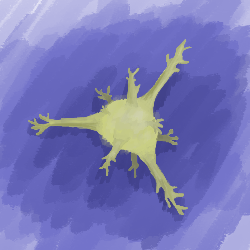Stub
This page is a stub, meaning it is incomplete. Help expand it by commenting or create a new issue on the git!
Astronomy is a study often confused with wizardry. While many wizards may also practice astronomy it is a separate area of study. Astronomy involves the observation and interpretation of stars to create a better understanding of the Gods and God Tongue.
To become an astronomer requires a keen eye and great understanding of the natural world, one that anyone can master with years of study and practice. Wizardry can sometimes play a role in easing the process of proper measurements. Enchantments can be used on astronomical tools to provide more accurate measurements and more recently have even been used to print the proper measurements.
History
God-War Era
The God-War Era was an age of few sciences, including a lack of practiced astronomy. However, to ignore this era is ignorant. The God-War is responsible for the creation of a majority of the stars in the sky, and some of the earliest astronomers were highly influential to the modern study.
Post-War Era
Golden Age
Modern Era
Observational Astronomy
Observational astronomy is the observation and measurement of the stars. This includes mapping their positions in the sky, their distances from one another, their own sizes, their interactions, and more. This can usually involve many complex measuring instruments to get precise numbers, which are usually located at an observatory.
Observational astronomy can be indulged in by amateurs, assuming they have the proper funding to afford instruments capable of measuring the stars or have the knowledge of math to properly calculate many of these on their own. The naked eye can, and has, been used historically to measure the stars with great accuracy.
Astronomers can measure a star’s distance from the Earth using its parallax. Many astronomers make great journeys across much of the world to measure the positions of stars from different places. Astronomers can then to measure the distance between different stars and the size of stars based on their distance from the Earth and their distances from one another. Star maps are the fruit of their labor; models of the stars in the sky that accurately depict their distances and sizes.
Star color and brightness is easily measured with an instrument such as a telescope. Stars come in all colors and brightness, and these can be used to calculate the star’s temperature and mass too. A notable feature of stars is their dendrites, long structures which tower off the surface of the star. The amount, placement, and size of these can be calculated using a telescope and other instruments.
An important feature of stars too is their movement. Stars rotate at different rates, a fact which astronomers use to their advantage to see all parts of the star, an important feature of counting a star’s dendrites from one place. This is not the only feature of stars which moves, however. The outsides of stars is a constantly shifting space, but it changes mathematically, a key feature to the translation of stars.
Interpretational Astronomy
Interpretational astronomy is the study of the meaning and language of the stars. Stars are true written God Tongue and as such the goal for most astronomers is to translate the meaning of the stars and forge a better understanding of God Tongue for wizards. This can be done in a number of ways, but requires a keen eye and many years of patience watching the same star.
All attributes of a star, including its distance from the Earth, color, brightness, temperature, mass, rotational speed, and shape, are essential in interpreting and translating it. Some notable connections between attributes and translations can be drawn very quickly. A star’s age can be calculated based off of its brightness, a star’s importance based off of its distance.
Functionally translating a star to an understandable form of written God Tongue is a very complicated process which can take years and requires close watching of the star. The full process is unknown to all but the greatest minds of astronomy.
Astronomical Phenomena
The Sun
The Sun is the largest star in the sky and the closest to the Earth. It is one of the most translated stars in astronomy, with hundreds of different transcriptions in both God Tongue and in mortal languages. The Sun was created at the end of the God-War, it is the proposed and signed Harmonic Treaty and thus the most influential star in history. The creation of the Sun also created the God of Harmony and limited each God to their own respective section of nature. Each current living God signed the treaty, and as such all current Gods are forced to abide by its law an~~~~d enforce its law.
Fallen Stars
When a God dies all stars they have created fall to the Earth as ossified husks; fallen stars. These stars can be studied in great detail by astronomers and on many occasions have proven as incredibly useful tools in learning about the interpretation of stars. The Great Astronomy Foundation is known for their great collection of fallen stars. Recently, too, a documented case of a fallen star returning into the sky has occurred, the Cracked Star Incident. Below is a painting of a fallen star:

Cultural Connections
Famous Astronomers
- Cracked Star Man (44-0)